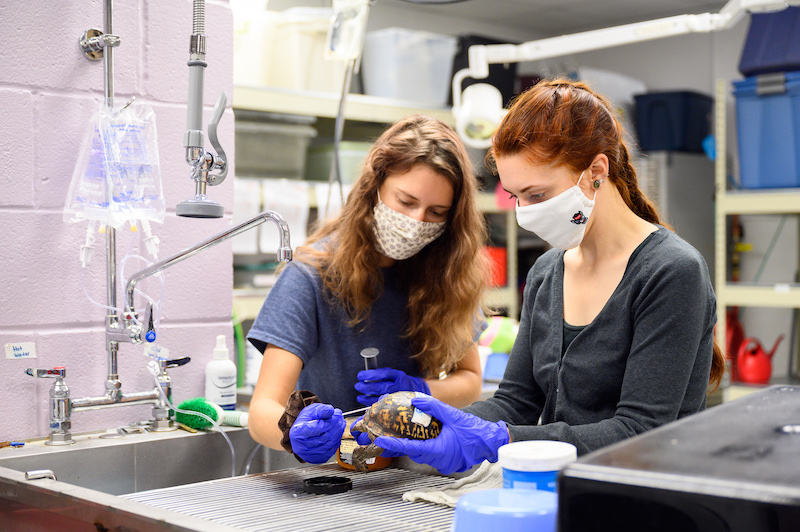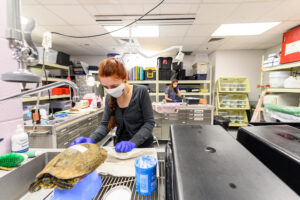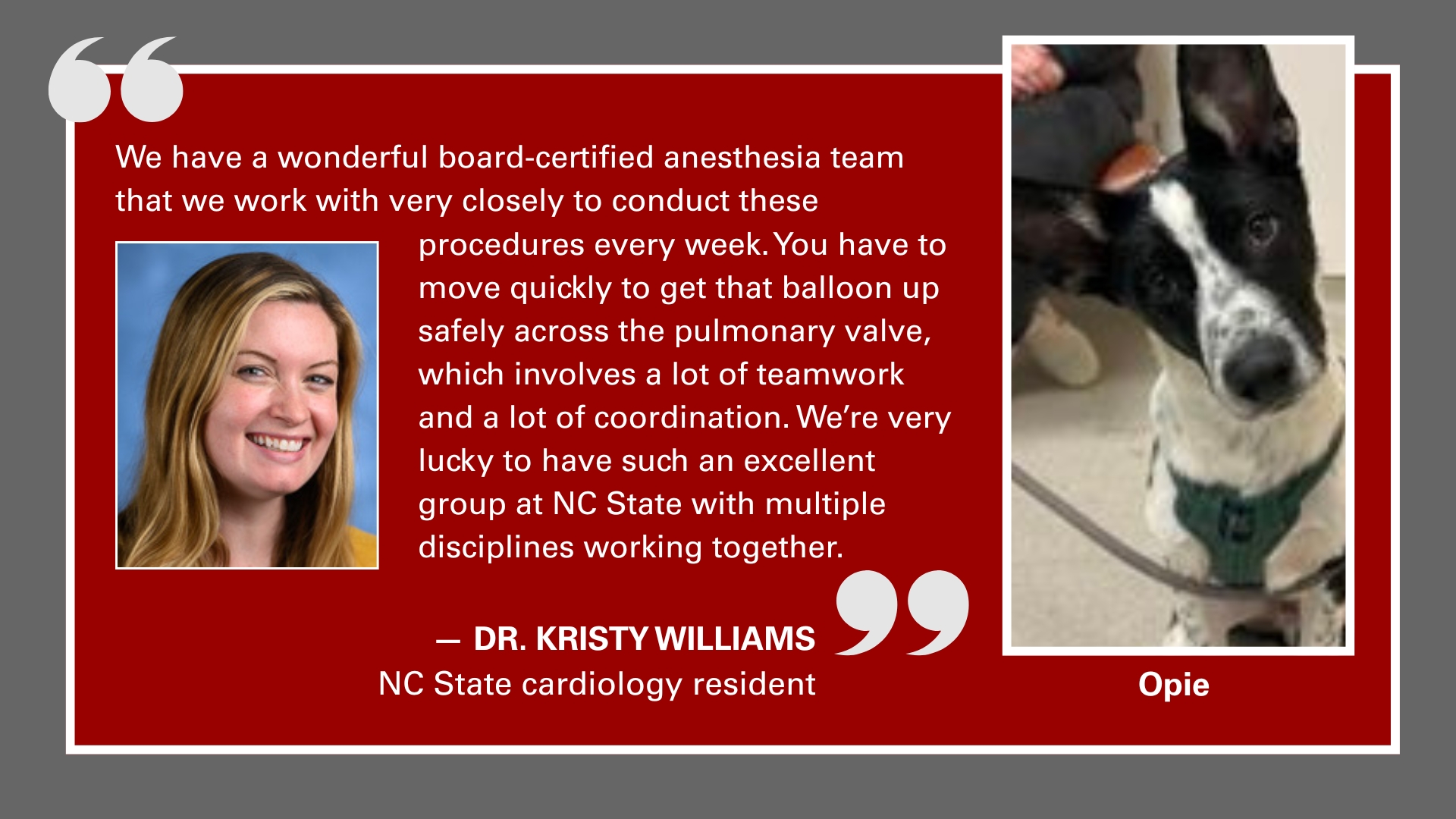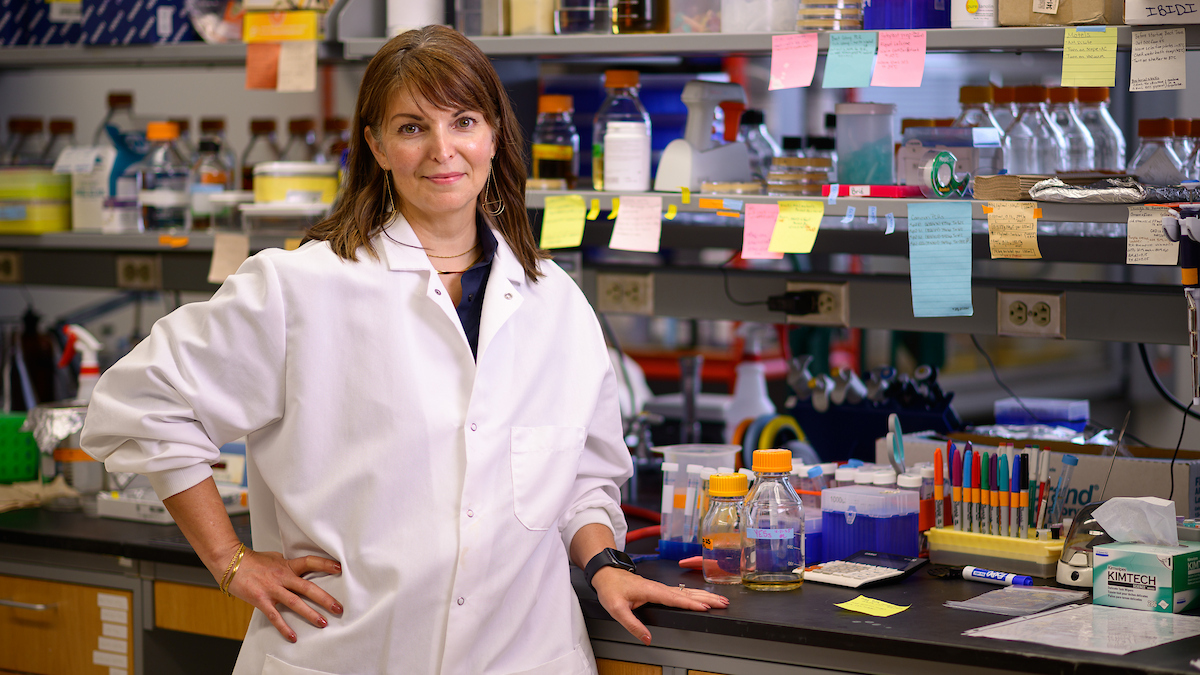Volunteers Lead Renovation of Turtle Rescue Team Headquarters

Greg Lewbart has been there from day one.
Lewbart, professor of aquatic animal medicine at the NC State College of Veterinary Medicine, was there when the first injured wild turtle was brought to the CVM by a member of the public looking for medical assistance. It was not long after he first started working at the college in 1993.
Today, the Turtle Rescue Team’s bustling center of reptile and amphibian healing occupies a newly renovated headquarters in the NC State Veterinary Health and Wellness Center, courtesy of generous supporters and volunteers. But it’s been quite a journey to get there.
Lewbart recites a litany of locations the team has occupied through the years, including one that featured a shower curtain for a door. But things are definitely looking up now.
Key to the transformation has been volunteer Richard Hibbits.
Hibbits loves turtles. That’s why the avid cyclist and longtime general contractor was eager to take on the task of giving the Turtle Rescue Team new headquarters. He has a track record of taking on worthy causes, including the renovation of the Morehead Planetarium on the campus of the University of North Carolina at Chapel Hill.
“We went to lunch and talked about the project,” Lewbart says, “and Richard said he wanted to help, but not by writing a check. He said ‘I’m gonna build it.’”
Go behind the scenes with the NC State College of Veterinary Medicine’s Turtle Rescue Team
Hibbits carefully evaluated the available space and the needs of the turtle team, then executed a careful renovation plan by seeking out inexpensive solutions and donated work and materials. “If we needed it, he got it,” Lewbart says.
Systematically and frugally, Hibbits oversaw a project that included replacing walls, cabinets, lighting and plumbing, as well as an expansion of the team’s existing space. Especially important was the donation of scrap steel from Ryan Morganthal of the Buhler Aeroglide Corporation’s Cary manufacturing facility. The steel was used to create new table tops and cage platforms.
Few could have predicted the upgraded status of the Turtle Rescue Team today from its humble beginnings. That’s when turtles were not commonly found at the CVM. But Lewbart’s instincts as a healer kicked in, and he began attending to the occasional injured reptile as they came his way from his small lab on the third floor of the CVM’s D wing in what is now the Health and Wellness Center.
Today, the Turtle Rescue team is a student-run volunteer organization with Lewart as its sponsor. A recent addition is Ashley Kirby, the first Carolyn Glass Turtle Rescue Team Intern, a new position created through donor support.

Members of the public bring sick and injured turtles to the team for medical treatment. Many of the slow-moving creatures are struck by cars or attacked by animals, resulting in broken shells and other serious injuries. Turtles are remarkably resilient creatures, though, and many survive if they receive the necessary treatment. The team is dedicated to providing it, handling more than 500 cases a year.
Lewbart says that the turtle rescue and rehab operation has occupied five different locations in the Health and Wellness Center between 1996 and today. It was shuttled from one vacant space to another as the needs of the college evolved. But the desire to meet the needs of injured wildlife persisted and grew.
In addition to medical services, the group is engaged in research, publishing academic papers and mentoring for both students and volunteers.
“I’m most proud of the turtle team of anything I’ve done in my career,” he says. “More than being a fish doctor or any research.”
~Steve Volstad/NC State Veterinary Medicine


